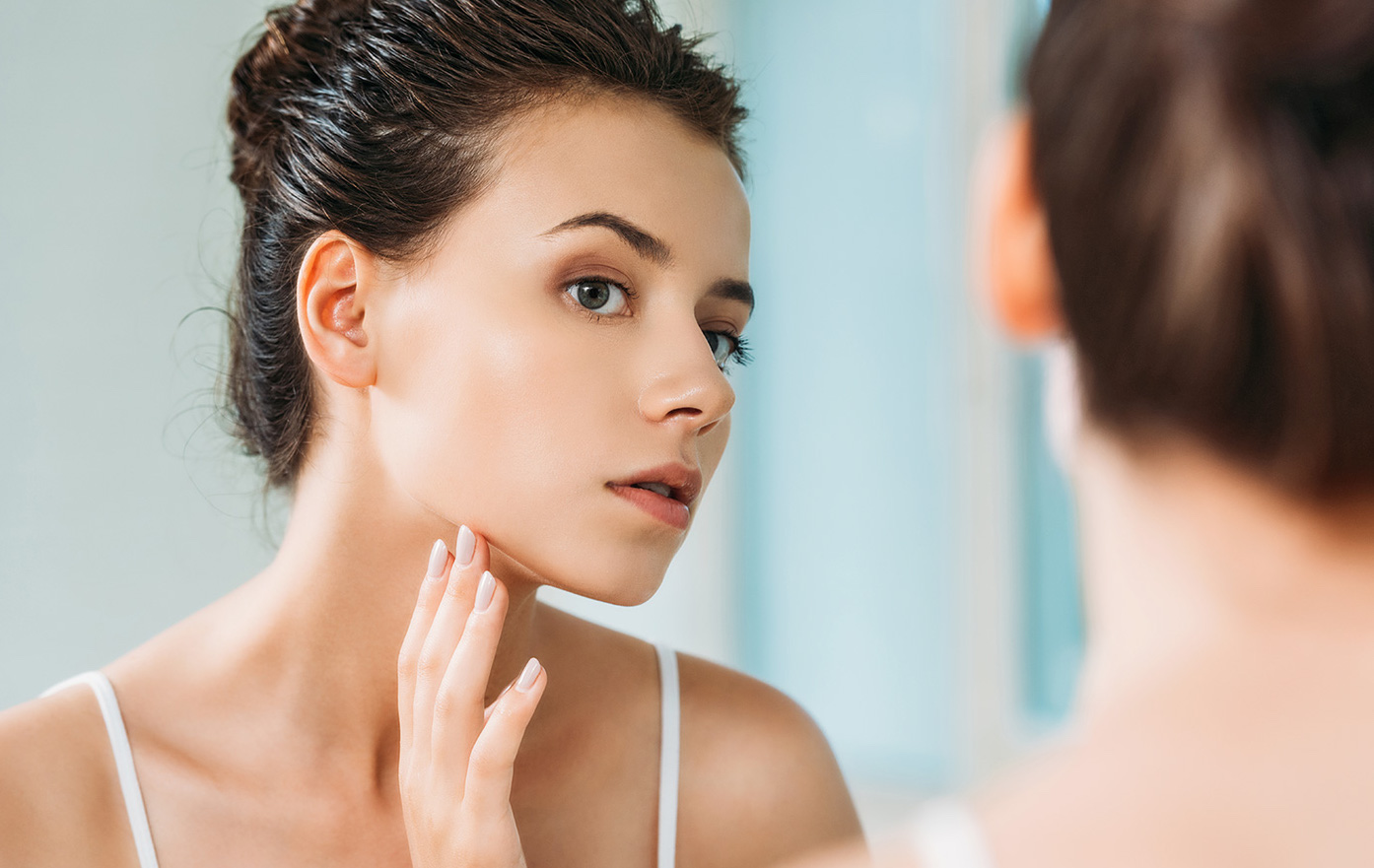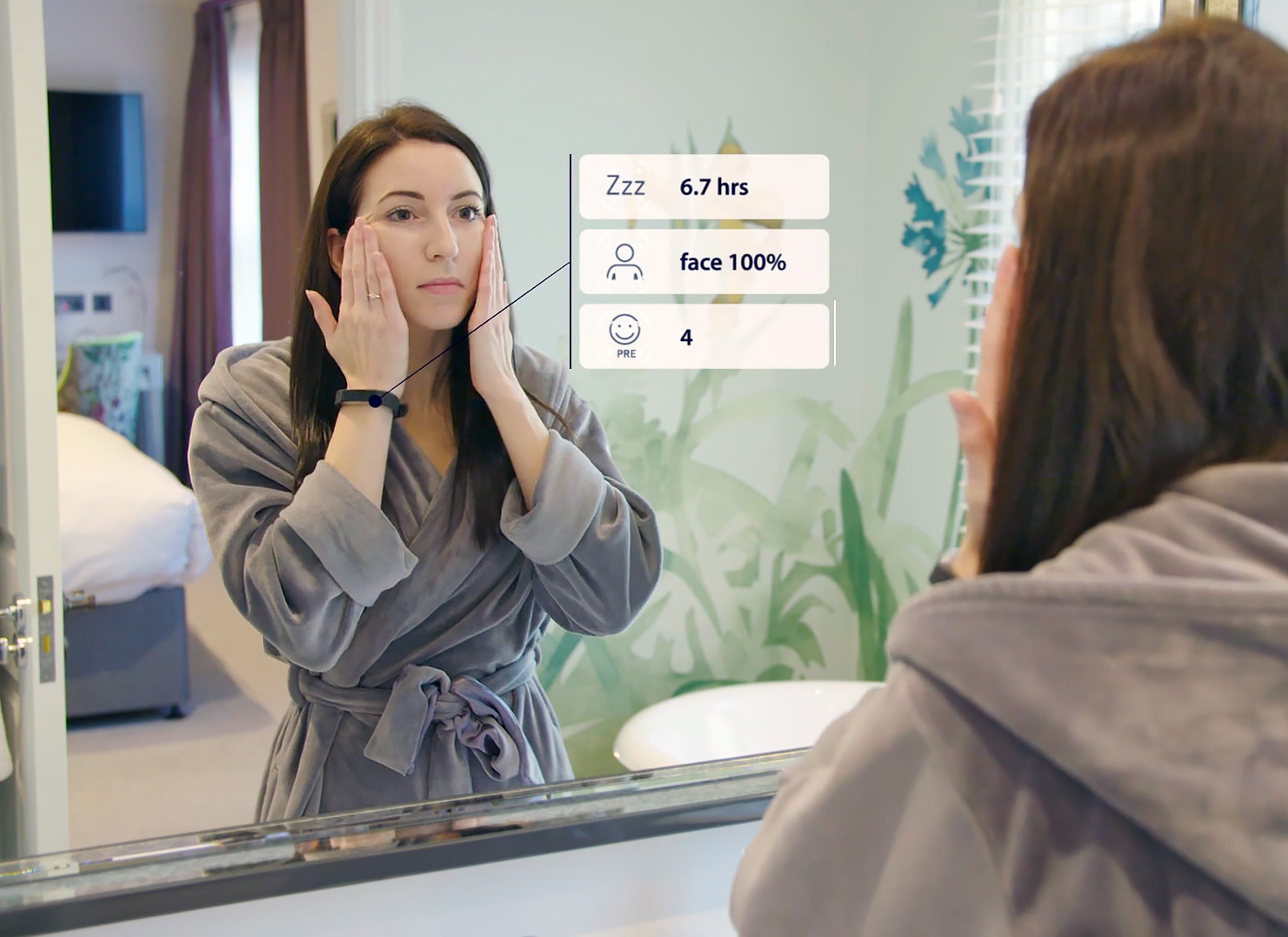Synapse and Cambridge Consultants have been following the market, attending trade shows and conferences, and meeting with chief executives at beauty companies around the world to get a glimpse of the future trends for technology and beauty in 2019 and beyond. Here are some of our observations.
What’s Been Happening in Beauty Tech
Last year we saw multiple examples of ways to measure, monitor, and personalize: Neutrogena Skin360 and SkinScanner now available online; L’Oreal launched a battery-free wearable to monitor UV exposure and promote sun safety; and the Philips SmartSleep made getting your beauty sleep all the more easy. Kohler and HiMirror introduced products that give you makeup tutorials, skincare advice, and track how products work in the comfort of your own home. And on the hair care front, SalonLab customized products on-demand in the salon.
Even though we’re still in the early days of tech being embraced by the beauty industry, a lot is already happening in 2019 to build on the momentum we’ve seen in the past few years. Personalization, personalization, personalization (did we say personalization?) is still the industry-wide trend that’s driving customized beauty products and experiences, with artificial intelligence and augmented reality playing leading roles on the tech side.
While many major beauty brands continue to develop new products within their own walls, we’ve seen a number of brands looking more and more to outside partnerships and investments to accelerate innovation and gain a competitive edge in a rapidly evolving market. Several major brands announced acquisitions or partnerships in 2018 with established startups and technology innovation firms (particularly in the AI, AR and other emerging technology spaces). For instance, L’oreal acquired Modiface this past March, giving the company an advantage on competitors in the emerging AR beauty app space, and confirming that AR/AI personalized decision-making in products is becoming less of a gimmick and more mainstream.

AR, AI and Sensing Trends
Companies have been investing heavily in advancing sensing technologies that support the beauty tech sector in the next wave of beauty and personal care technologies, leveraging expertise in artificial intelligence, augmented reality, connected device systems and product realization.
Recognizing the strong desire from the industry to measure, monitor, and quantify, we set out to make it easier. Many of the technical answers already exist in lab-based technologies, but they are bulky, expensive, need high control over measurement conditions, etc. There is a growing trend towards bringing the lab/clinic home, and we bring capabilities that make it possible to transfer technology into the hands of the consumer.
Here are some areas companies are exploring:
- Democratizing Skin Care using Technology: How to bring the benefits of multi-spectral imaging into a consumer-use device. A great example we have been working on is Skintuition. This type of image diagnostic technology, which could also be applied to hair, allows the tracking of various skin attributes and changes over time. Giving people the tools to determine skin condition and track product performance over time will be an absolute expectation in the next few years.
- Improving Analytical Models: Developing imaging and predictive technologies by building light-tissue interaction model and other valuable tools to enable a new generation of truly personalized skin care approaches.
- Making Technology Invisible: Many people want technology to be discreet and don’t want to carry around additional devices. With smartphones being ubiquitous, new sensors embedded into smartphones will increase the sensing capabilities and enable additional, low-cost consumer data options. Data will be king and will enable not only new user functions and business models, but a true marketing to one ecosystem. Our AI concept app, Reflexion explores this idea to demonstrate what is possible with no additional hardware. Relfexion’s skin analysis system uses the Bidirectional Scatter Distribution Function (BSDF) and cleverly applied AI algorithms to address the challenge of getting a repeatable image and analysis under different ambient light sources using only a standard smartphone or tablet camera. When applied to the use application of smart beauty curation and recommendation, a technology approach like Reflexion can enable repeatable personalized analysis across a myriad of environments and devices.
- Empowering Consumer Insights and Data: In the area of consumer trials, we see a very strong trend towards the use of technology to gain real-time insights in the real world. Until recently consumer trials have been limited to more qualitative focus groups, individual interviews, observation behind mirrors, diaries, etc, which limits the type and frequency of data that can be collected; and because traditional data collection methods are generally historical in nature they are prone to perception biases and are less agile to course correction from real-time insights. As a result, we see a massive opportunity to utilize technology in the consumers’ hands to gain valuable insights in real-time into product usage, efficacy, and context of use. This could improve the speed of product development, provide insight for new innovation, and also gather evidence for claims. It requires capabilities across system architecture, sensors, data science, AI, UI design and others to successfully realize this vision. To that end, we have explored Experiential Sensing as a first concept for empowering data-driven consumer insights.
Here’s What to Look Out For
1) AR is becoming far less of a gimmick, as the tech becomes more sophisticated, mobile, and able to provide a personalized experience with:
- Selection and Customization of Products: helping users visualize what makeup and hairstyles look like on them before they buy, or analyzing skin and mixing a custom lotion on the spot
- Product Performance Tracking: how is the moisturizer helping my skin? Should I switch to a new product? Tracking changes over time and visualizing evidence of impact with lab-like precision at the consumers’ fingers
2) Products are becoming more and more integrated into the daily lifestyles of consumers, e.g., integration into the bathroom, at-home living spaces, and on-the-go, as AI tools become more sophisticated and mobile. Look for more personalized and contextually aware data clouds, lab-like diagnostics, and analytics that allow the user to track their skin/hair health over time and personalize regimes in response to real-time changes in weather, lifestyle, treatments, etc. And, as beauty tech becomes more ubiquitous in the consumer’s daily experience we’ll get to see who else jumps in the ring. What will the major appliance companies or tech giants like Apple, Amazon, or Google do? Will Apple pursue a watch with skin diagnostics or AI to recommend skin-care regime/products? Who will win, the beauty brands or the people who already own the home or mobile space?

3) Evidence creating technologies are becoming more sophisticated and integrated into the consumer products themselves, the product development process, business intelligence, communications, and operations. Two key areas getting more attention:
- Evidence-Based Claims: We see a strong trend of technology being used to build quantitative data (in consumer trials and commercial use) to demonstrate efficacy and backup marketing claims of product performance and benefits. Imagine if you could follow every customer and see what they see, feel what they feel, and understand if your product is performing as intended? Nobody wants to claim a product benefit (e.g., reduces wrinkles, moisturizes skin, makes you look younger) if it doesn’t exist. Forward-thinking companies will turn to technology for a deeper understanding of their customers, in order to develop more innovative products and market evidence-based claims.
- Evidence-Based Results for Consumers: Many skincare products require that the customer stick to a treatment regime for an extended period of time, often months-on-end before results are noticeable. Consumers want to know that the product will meet their needs. After they purchase, they want proof that it’s working and they want to track changes over time to prove it.
4) New devices and chemistry combinations are being developed to create entirely new treatments and experiences.
While there is significant investment in chemistry R&D by companies such as L’Oreal, Estee Lauder, P&G, Unilever and Beiersdorf, there is also investment in novel devices, delivery systems, and other “device + chemistry” solutions that continue to expand the category, add consumer benefits, and create novel consumer experiences.
As new technologies become commonplace, and the cost and size of technology substantially reduced, integrating new technology that was once cost prohibitive, is now possible. There also remains a tremendous opportunity to revitalize good product ideas that lived their useful life, but with the addition of more contemporary technology, breathe new and exciting life into dormant products.
These new technologies will provide consumers with professional level results using low cost products that deliver nearly an identical benefit to salon or professional treatments.
In the broader category of personal care products, most larger brands are exploring “device + chemistry” product offerings. In its simplest form, the function of an existing hardware product (like a razor or a toothbrush) is combined with its usual chemical companion, such as shaving cream and toothpaste. This simple combination begins to address how companies can create a new consumer experience, but does not yet take full advantage of how the combination of a device plus chemistry can create a more efficacious result.
Where the concept gets exceedingly interesting, is when in combination, the outcome is dramatically better than the two products used alone, or in the best cases when the combination of the device + chemistry not only achieves a better outcome, but work in tandem to achieve a result impossible without that symbiotic combination.
Take for example, the SKII StemPower cream that uses tiny magnetic particles. After applied to the face, a small magnetically charged hand-held device is used to activate the beneficial properties of the cream and help drive the cream deeper into the skin. In this case, the product experience is only as a result of the device (i.e. the magnet) and the chemistry (i.e. the special cream).
Look for more examples of “device + chemistry” from all the major beauty and cosmetics companies that use various forms of heat or energy to both prepare the skin for the lotion, or provide a skin/lotion interaction that improves the overall outcome, i.e. smoother skin, fewer wrinkles, and done so in less time! New devices could use a variety of technologies including light, magnetics, and even RF energy to provide new experiences and benefits not possible with lotions alone.
While we can’t predict every product that might come to market (that’s what makes innovation so fun), we can infer that every major player is looking heavily into how technology can attract new customers, provide more delightful and meaningful experiences, and create products to deliver better results and more efficacious treatments.